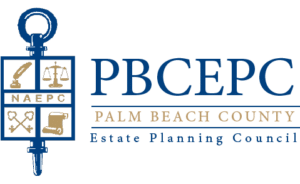
“Tax-Free” and “Non-Taxable;” phrases we don’t hear often enough. As a child my parents would say “nickel, nickel, nickel” to remind me not to waste money. Today, with estate planning, the applicable phrase is “40%!, 40%!, 40%!” Federal income tax rates are about 40%, the gift & estate transfer tax rates are 40%, and the Generation Skipping Transfer (GST) tax rate is 40%.
A triple tax is a terrible drag on asset growth for future generations. However, with intentional Grantor Trusts for spouses, children, grandchildren, and charity, you can begin with the premise that, if desired, everything can be tax-free or non-taxable. How do I get this “tax-free” opportunity? By simply following the rules Congress set out for us as taxpayers.
Successful people who fund Grantor Trusts choose to shift wealth accumulation from their taxable estates to estate tax-free trusts for others. Property held in trust is precisely how they perpetuate what they worked so hard to build. Here is the formula.
Step #1. Create a flexible Irrevocable Grantor Trust. You are the Grantor. Fund it with a modest tax-free gift, perhaps $10, that can’t be taken back. You now have a Grantor Trust that is ignored for income tax purposes. The IRS treats any non-gift transactions (i.e., loans or sales) between you and your trust as non-taxable; as if you simply moved an asset from your personal right-hand pocket to your left-hand pocket (the trust).
Step #2. Use Private Financing. Select assets (or use cash to invest) that can grow at more than the current interest rate. Sell those assets to the Trust for a non-taxable interest-only note. There is no capital gains tax on the “pocket to pocket” Grantor-to-Grantor Trust sale and no income tax on the Trust-to-Grantor interest payments. Since it is not a gift, there is no gift tax. And your transferred trust assets will grow estate tax-free!
Many people stop their planning with Step #2. With the “loan” of a stock portfolio to the Trust, normal turnover triggers capital gains tax. Because it’s a Grantor Trust, the Grantors pay the income tax, thereby reducing their taxable estates (which is good) while the Trust grows estate tax-free (which is better). However, you can invest in Trust assets that are income tax-free (and may be best for your planning). That’s Step #3.
Step #3. Purchase tax-free Trust assets. Most investment assets generate taxable income or taxable growth in the form of income or capital gains taxes. These include stocks, bonds, other securities, real property, art, and collectibles.
Tax-free (not tax-deferred) assets include municipal bonds, US Series I savings bonds, tax-free exchange traded funds, investments held inside a Sec. 529 Education Savings Accounts, and permanent life insurance. They can grow and mature or be liquidated without paying any income tax. Selecting the assets to use is not as complex as it may seem. Each asset type correlates to one of the Grantor’s goals for the Trust beneficiaries. Here are three examples.
Example A. A Perpetual Education Trust. Fund your Trust with three tax-free portfolios: (1) tax-free municipal bonds; (2) equities inside a tax-free 529 Account; and (3) permanent life insurance with tax-free benefits to repay the Step #2 non-taxable note that funded the Trust. Examples B and C are for ultra-high net worth families with large potential estate tax liability.
Example B. $70,000,000 for Grandchildren. Fund your Grantor Trust with a $25 million dollar loan at the IRS long-term applicable interest rate (currently about 3.2%). Invest the loaned assets in tax-free funds expected to return 4.5%. As permitted for special Split-Dollar Loans, accrue the interest without income tax. The Trustee can use the tax-free investment income to purchase life insurance on their children. The insurance provides a $70 million dollar tax-free death benefit for the benefit of grandchildren and descendants.
Example C. Estate Tax Mitigation. Without life insurance, successful families may be forced to sell their best assets to pay estate taxes. A Grantor Trust can use the many funding variations of Step #2, above, to acquire triple tax-free life insurance and efficiently fund their estate tax liability. The Grantor Trust will use the tax-free death benefit to buy the estate’s best assets for the heirs and provide liquidity to pay the estate tax. And, by the way, because these estate assets will receive a step-up in basis at death, the transfer will be income tax-free.
Living a tax-free future can be within your family’s reach. It begins by taking the first step.
This information is for general and educational purposes and not intended as legal, tax, accounting, securities, or investment advice, nor an opinion regarding the appropriateness of any investment, nor a solicitation of any type. File# 4958993.1
Jones Lowry is an independent M Financial life insurance planning firm specializing in the analysis, design, implementation, and administration of large-block life insurance portfolios for ultra-high net worth families. R. Marshall Jones, JD and Eric Eklund, JD lead the Advanced Planning Team. They are nationally recognized authors and speakers.
